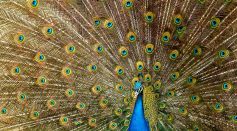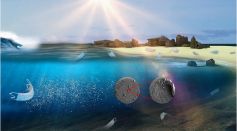ENVIRONMENT & CLIMATE

Projected Increase in Transportation Demands Call for Faster Adoption of Electric Vehicles to Stop Global Warming
Lost World: Mysterious Ancient Mangrove Ecosystem Flourishes 124 Miles Away From the Nearest Ocean
Unknown Eocene-Oligocene Mass Extinction that Wiped Out 60 Percent of Mammals Discovered for the First Time

Breaking Discovery: How Scientists Have Unearthed a 120 Million-Year-Old Prehistoric Peacock That Lived Alongside Dinosaurs
13th Century Arrival of Māori People Found Frozen in Antarctic Ice Core; Researchers Link Fires, Volcanic Eruptions to the Finding
Fossilized Never Before Seen Tardigrade Species From 16-Million Years Ago Discovered With Exterior Body and Claws Still Intact

Disposable Masks Bring More Microplastics to the Planet's Oceans
Tomb of Nestor's Cup Contained Cremains of at Least Three Humans: Who's Buried With the Oldest Greek Writing?
Sugadaira Highlands Kogen Biome Unveiled: New Study Shows How the Area Has Been Rapidly Losing Its Grasslands the Last 300 Years

Why Do Squirrels Collect Nuts? Man Discovered His Pickup Truck Became a Storehouse After Finding 150Kg Walnuts
Actual Hurricane Experience: Watch How, What It’s Like to Be Inside a Twister
Extreme Melting of Arctic Permafrost May Free Trapped Ancient Viruses, Radioactive Waves
Twinning Sea Turtles: Conservation Workers Discover a Rare Occurrence, a Pair Sharing the Same Egg, After Nest Excavation

Why Are More Acorns Falling? Excessive Drops of Nuts from Oak Trees Is Part of Normal 'Mast Year' Phenomenon
Most Popular

Memory and Learning: How the Brain Stores, Retrieves, and Forgets Information

Gut Microbiome 101: How Gut Bacteria Influence Immunity, Mood, and Metabolism

How Solar Activity Shapes Our Planet: What the Next Solar Maximum Means for Earth

Antibiotic Resistance: How It Develops and Why Misuse of Antibiotics Is Dangerous





